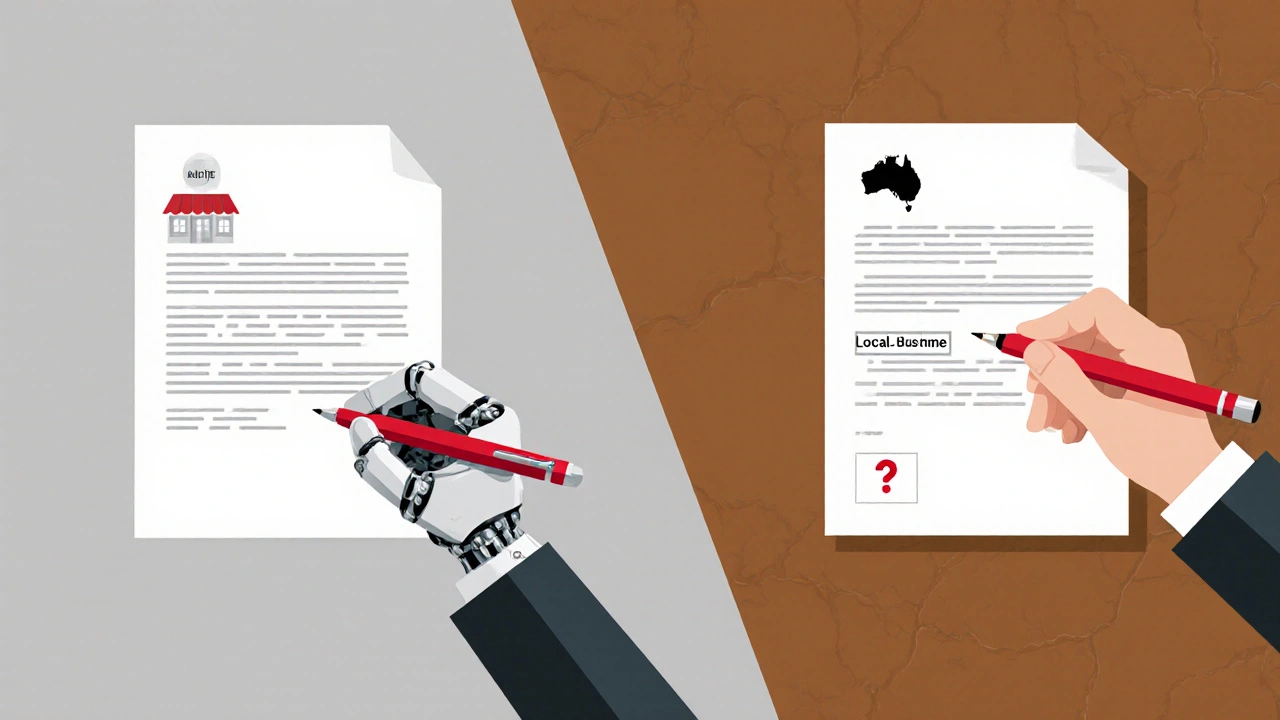ChatGPT for Content Generation: A Practical Guide to Writing Faster and Smarter

ChatGPT Prompt Quality Checker
Check your ChatGPT prompts against the proven formula from the article. We'll score your prompt and give specific feedback to make it work better.
Most people think ChatGPT writes content for them. That’s not how it works. It doesn’t sit down and draft a blog post like a human. Instead, it turns your ideas into words-fast. And if you’re still typing every sentence yourself, you’re wasting time. ChatGPT isn’t here to replace you. It’s here to make you 10 times more productive.
What ChatGPT Actually Does for Content
ChatGPT doesn’t generate content out of thin air. It takes your direction and turns it into text. Think of it like a really fast intern who’s read every blog, news article, and product page ever written. Give it a rough outline, a few keywords, and it’ll spit out a draft in seconds. But here’s the catch: you still need to guide it. A vague prompt like "Write about SEO" gives you vague results. A clear prompt like "Write a 600-word beginner’s guide to on-page SEO for small business owners in Australia, using simple language and three real examples"? That’s where the magic happens.
Real users aren’t using ChatGPT to write entire articles from scratch. They’re using it to kill the blank page. One marketer in Sydney told me she used to spend three hours writing a single blog post. Now she spends 20 minutes giving ChatGPT a structure and editing the output. That’s the real win-not automation, but acceleration.
How to Write Prompts That Actually Work
Not all prompts are created equal. The difference between a good prompt and a bad one is like the difference between asking for "a sandwich" and asking for "a turkey club with sourdough, crispy bacon, and spicy mayo on the side." Specificity gets you better results.
Here’s the formula that works every time:
- Role: "You are a content writer for a B2B SaaS company."
- Task: "Write a blog post."
- Details: "Target audience: small business owners in Australia. Topic: how to choose accounting software. Word count: 800. Tone: friendly but professional. Include three real examples of software used by Australian businesses."
- Format: "Use H2 headings, bullet points for pros and cons, and end with a call to action."
That’s it. No fluff. No "please" or "could you." Just clear instructions. Try it with your next draft. You’ll see the difference.
One common mistake? People ask ChatGPT to "be creative." That’s not helpful. Creativity comes from you. ChatGPT’s job is to execute. Give it the blueprint, and it’ll build the house. You decide the color of the walls.
Where ChatGPT Shines (and Where It Falls Short)
ChatGPT is great at:
- Writing first drafts of blog posts, emails, and social captions
- Turning long reports into short summaries
- Generating multiple versions of headlines or ad copy
- Fixing grammar and tone in existing text
- Brainstorming content ideas based on keywords
But it’s terrible at:
- Understanding real-time local events (like a new Australian tax rule from last week)
- Knowing your brand voice if you haven’t told it
- Writing original research or citing recent studies
- Recognizing when something sounds fake or robotic
That last one matters. A lot. If you paste ChatGPT’s output directly onto your website, readers will notice. It sounds like a textbook written by a robot who’s never met a human. Your job isn’t to let it write-it’s to make it sound like you.

Real Examples: Before and After
Here’s a real prompt I used last week for a client in Canberra:
Prompt: "Write a 500-word blog post titled 'Why Australian Small Businesses Are Switching to Cloud Accounting in 2025'. Target audience: shop owners with no finance background. Use simple language. Mention Xero, QuickBooks, and MYOB. Include one real example of a local business that saved time. End with a question to encourage comments."
ChatGPT Output (first draft): "Cloud accounting is becoming more popular among small businesses in Australia. Many are switching from traditional methods to cloud-based software. This allows them to access their finances from anywhere. Popular platforms include Xero, QuickBooks, and MYOB. These tools offer automation and real-time updates."
That’s accurate. But it’s boring. It sounds like a Wikipedia entry.
Edited version (after my changes): "Last year, Lisa from The Little Bookshop in Queanbeyan stopped doing her books by hand. She used to spend two hours every Friday night balancing spreadsheets. Now, she opens her phone after closing, taps a button, and her sales, expenses, and GST are sorted. No more late nights. No more panic before tax season. She’s not alone. Over 68% of Australian small businesses with under 10 staff now use cloud accounting, according to a 2025 report from the Australian Small Business and Family Enterprise Ombudsman. Xero, QuickBooks, and MYOB aren’t just tools-they’re time machines. If you’re still printing receipts and filing them in a drawer, ask yourself: what could you do with those extra 8 hours a month?"
The edited version has personality. It has a story. It has a number. It has a question. That’s what turns AI content into human content.
How to Edit AI Content Like a Pro
You don’t need to rewrite everything. You just need to make it feel real.
Here’s my 3-step editing process:
- Read it out loud. If it sounds like a robot wrote it, change it. Swap stiff phrases like "utilize" for "use." Add contractions: "it’s," "don’t," "we’ve."
- Add one real detail. A local business name. A specific number. A real problem your audience faces. This is what makes your content trustworthy.
- Break up the flow. AI loves long paragraphs. Humans don’t. Split them. Add short sentences. Use bullet points. Throw in a question. Make it feel like a conversation.
One content manager I know edits every AI draft with a red pen-on paper. She says it forces her to slow down. You don’t need paper. But you do need to pause. Don’t hit publish until you’ve made it sound like you.

Tools That Work With ChatGPT
ChatGPT doesn’t work alone. It’s part of a system. Here are the tools I use alongside it:
- Grammarly - catches tone issues and awkward phrasing
- Surfer SEO - shows you what keywords real top-ranking pages use
- Notion - stores your brand voice guidelines so ChatGPT learns over time
- Google Trends - finds what people in Australia are actually searching for right now
You don’t need all of them. Start with one. But don’t expect ChatGPT to do everything. It’s a teammate, not a replacement.
Common Mistakes to Avoid
People make the same mistakes over and over:
- Using the same prompt for every piece of content. Your blog post isn’t your email. Your Instagram caption isn’t your product page. Tailor the prompt.
- Believing AI content ranks better. Google doesn’t care if it was written by a human or a machine. It cares if it helps users. If your content is shallow, it won’t rank-no matter who wrote it.
- Skipping fact-checking. ChatGPT makes up sources. Always verify numbers, names, and claims. A fake stat can destroy your credibility.
- Not training it on your brand. If your brand is funny, say so. If your tone is serious, tell it. Give it examples of your past posts. It learns from what you show it.
How to Start Using ChatGPT for Content Today
Here’s your 5-minute plan:
- Open ChatGPT.
- Take your next blog post idea and turn it into a prompt using the formula above.
- Ask for a first draft.
- Read it out loud. Edit for tone and one real detail.
- Hit publish.
You don’t need to be an expert. You don’t need to write 10 posts a week. Just write one. Use ChatGPT to cut the time in half. Then do it again next week.
The goal isn’t to write faster. It’s to write more of what matters. More stories. More helpful advice. More connection with your audience. ChatGPT gives you the time to do that.
Can ChatGPT replace human content writers?
No. It can’t replace the thinking, the empathy, or the real-world experience that makes content meaningful. What it can do is handle the heavy lifting-drafting, structuring, and polishing-so you can focus on strategy, editing, and connecting with your audience. The best content still comes from humans who use AI as a tool, not a crutch.
Is AI-generated content bad for SEO?
Not by itself. Google doesn’t penalize content just because it was written by AI. What Google does penalize is low-quality, shallow, or misleading content-no matter who wrote it. If your AI draft is full of fluff, generic advice, and made-up stats, it won’t rank. But if you take that draft, add real examples, fix the tone, and make it genuinely helpful, it’ll perform just fine.
How do I make ChatGPT sound like my brand?
Give it examples. Paste three of your best past posts and say: "Write the next one in this style." Tell it your tone: "We’re friendly but not casual," or "We use humor but never sarcasm." Save these notes in a document and refer to them every time you prompt. Over time, ChatGPT will start mirroring your voice.
What’s the best free alternative to ChatGPT for content?
Claude 3 by Anthropic is a strong free alternative. It’s better at understanding long instructions and tends to write in a more natural tone. Gemini from Google is also useful if you’re already using Google tools. But none of them are magic. The real difference isn’t the tool-it’s how you use it.
How often should I use ChatGPT for content?
Use it whenever you’re stuck, overwhelmed, or running out of time. That could be daily for some, weekly for others. The key is consistency-not quantity. If you use it to write one solid post a week instead of forcing yourself to churn out three weak ones, you’ll see better results. Quality over speed, always.
